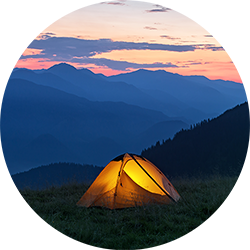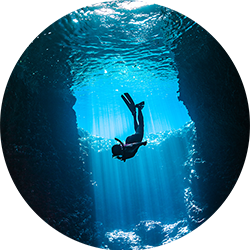![]() Bhushan Deshpande
Complete 17 Days Road Trip to Norway, Sweden and Denmark
Bhushan Deshpande
Complete 17 Days Road Trip to Norway, Sweden and Denmark
Everything was going great right from the start of the trip till the end which was beyond our expectations. About the booking platform we booked this trip with Thrillophilia and Yes, this is my first time being experience with them and I took with the longest tour as what they mentioned in the website everything seems very interesting especially the itinerary they clearly mentioned on it about the place and the attractions we are going to covered... the booking was easy, the payment was secure and the agent was a friendly and helpful response to all our questioned and gave a proper answered that with detail information about the trip I am going to take... The moment I land at this place the company representative give me a warm welcome and the best part was that they already arranged everything for me as they promised and everything exceeding our expectations, The place was truly amazing with its culture, architecture, history, and custom... Just in the span of 17 days, I covered Norway, Sweden, and Denmark... I really liked everything on this trip... Most importantly the itinerary was fulfilling that I am impressed and also appreciated the overall services they provided.
![]() Girindra Sethi
Highlights of Norway in 10 Days
Girindra Sethi
Highlights of Norway in 10 Days
The entire package was planned very well!!! Which is the main reason that we are very okay with this Highlights Of Norway In 10-days, the best part also was that the agents were responsive, polite, and understood our requirements very well? We had a local knowledgable guide in the city for one day through the guide we get to know more about the place, From the cruise, we had a breathtaking view from there plus the crew was polite and helpful... We covered the historical highlights of the city, fun walking tour in the center of the city along we did great shopping of souvinirs... The accommodations, transport, and pickups and drops were spot on... I would strongly recommend Thrillophilia as they are very professional in planning the trip plus they were very careful about the traveler too... It was a great experience and the sweet memories to be remembered
![]() Aamod Nehru
Complete Norway in 13 Days
Aamod Nehru
Complete Norway in 13 Days
We were just returned from an amazing trip to Norway, Thrillophilia was really a good platform to work with, The team was responsive and planned the first-class trip in just a span of 13 days. We stayed in a very beautiful accommodation with delicious breakfast... the picked-up and dropped-off were exactly what they said, Everywhere we went we get greeted by the people and all sightseeing were breathtaking. We do enjoy hiking, kayaking, fishing, excursion, etc... It was a great decision that we choose with this destination plus with this 13-days package which we were completely satisfied with this trip...
![]() Nanda Gowda
Highlights of Norway in 10 Days
Nanda Gowda
Highlights of Norway in 10 Days
I would recommend this trip to all my family and friends as it was a satisfying one, We get everything mentioned on the itinerary... It was a unique and great experience in Norway, On this package, it included hotels with breakfast, picks ups and drops, and activities. The sightseeing spots of the place was superb and we get nice pictures at each... We get to visit the villages and learn about their culture and traditions, we explored the markets and foods, and the best part was the cruise tour the views and the experience was really something we won't forget...
![]() Manjusha Mehra
Best of Northern Lights in Norway - 14 Days
Manjusha Mehra
Best of Northern Lights in Norway - 14 Days
What a lovely experience with Thrillophilia and with the destination we had our trip recently...Everything was perfect from booking, payment, and itinerary creation...The staff who look after our trip was great in communication right from the planning they already informed us all the important things we need to carry with us... From the airport, we were greeted by the professional staff who helps us with the documentation process and check-in at the hotel...The coordinators and the staff listened to everything we wanted and in real-time helps us with everything we needed... we loved all the tours we had on this trip especially the visited the major tourist destinations...The place has panoramic views with amazing sceneries... The accommodations and transport were all fantastic... Overall, I couldn't have asked for a better first trip to Norway... I can't wait to go back and next time would take my family along with me...
![]() Sucheta Namboothiri
Best of Northern Lights in Norway - 14 Days
Sucheta Namboothiri
Best of Northern Lights in Norway - 14 Days
Watching these is once in a lifetime I've had, never seen something more beautiful. Thanks for the experience and letting us n opportunity to travel close to the nature.
![]() Puneet Menon
Fjords & Auroras of Norway in 10 Days
Puneet Menon
Fjords & Auroras of Norway in 10 Days
The agent from this company was polite and friendly who loves to helps us with the trip destinations with details which we are okay with this Norway trip because of the trip duration, itinerary and the price. The place is beautiful with rich UNESCO World Heritage Site, historical attractions, lots of natural sceneries and many more exciting and wonderful sites. And Yes, during the experience we get everything that has been promised. The stays, transport, picked-up and dropped-off everything was fab. Team always there to support us during the trip. I am impressed and can't express how thankful I am...
![]() Kalinda Verma
Best of Northern Lights in Norway - 14 Days
Kalinda Verma
Best of Northern Lights in Norway - 14 Days
Thank you Thrillophilia for organizing such a perfect trip for us in Northern Lights in Norway for the span of 14 days and also for making the perfect and beautiful experienced at this place... We really appreciated the team for their work hard if not of the perfect planned I don't think that we'll have a successful trip.... we had a great time at each spot we visited and also had a great picture at each... The place is truly beautiful and truly worth seeing... The arrangements and all were top class with 24/7 services from the expert team...
![]() Deeptimayee Gupta
Complete Norway in 13 Days
Deeptimayee Gupta
Complete Norway in 13 Days
I enjoyed my trip to Norway completely...To be honest, at first, I was not sure about this trip but somehow the team makes me understand and shared everything about the trip and they already pre-planned the trip which worked well according to it...The itinerary was fulfilling and satisfying...From the start until the end, it went absolutely great without any fail...the place was impressed with its beauty, cleanliness, and kindness of the people, My favorite place I visited was Flam village which we enjoyed many adventurous activities and I was totally in love with the sceneries and views...by the way, all the sightseeing-spots were incredible...The hotel they provided to us was good and the transfers too were set-up for us...All-time services from the expert team...I can't remember all their name who involved helping our trip but all of them were nice and helpful...It was an incredible journey and experience in Norway.
![]() Acharyanandana Sethi
Best of Northern Lights in Norway - 14 Days
Acharyanandana Sethi
Best of Northern Lights in Norway - 14 Days
We had top-notch service with Thrillophilia right from the beginning of the planning, during, and after the trip. The trip destination was really GREAT and the sightseeing-spots were well-selected. Each spot we arrived was truly impressive and we had a different expereince at each. We thouroughly enjoyed the trip. The itinerary was very well-planned and amazingly executed. The whole trip was no hassle at all. From the start till the end the trip went well as we expected from it...





